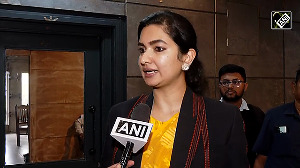The provisions concerning the fringe benefit tax are by now known to almost all tax payers, particularly the corporates.
While the FBT provisions are hurting where they apply to genuine business expenditure, when it comes to fringe benefits, we find that in most cases the net impact of income-tax, including the FBT, for the employer as well as employee taken together, would be much less in comparison to the non-FBT era.
So, if you look at the employee's cost to company and change the compensation structure judiciously, the employee's income-tax liability will fall while a small amount of the FBT would have to be paid by the employer.
The failed purpose behind fringe tax
When preparing the CTC, this small amount of the FBT paid by the employer can be factored in to ensure the CTC does not go up. Many corporate employers throughout India have already started resorting to this new concept and the employer as well as the employees are pretty happy with it because their tax liability now gets reduced.
If the whole corporate world were to adopt this strategy of planning CTC with reference to income-tax and FBT payment, there is every likelihood that the exchequer will lose a big chunk of money by way of tax payment by the salaried employees.
This is a reality due to which the government should consider scrapping the FBT.
As for corporates changing the structure of compensation to lower the total tax outgo, a leading Supreme Court judge has opined that " it is always open for a person to so arrange his affairs so as to pay least amount of tax".
It would be worthwhile here to prepare a check list of all those items of expenses, which if paid to the employees are not liable to FBT payment by the employer. Some of these items (from the Central Board of Direct Taxes circular no. 8 on August 29, 2005) include:
-
Reimbursement of expenses to employees provided they are other than items mentioned in Section 115WB(1) and (2). These include reimbursement of office expense, reimbursement of stationery, reimbursement of courier expenses, reimbursement of expenses on maintenance of personal office at residence and so on (question no. 9 in circular).
-
Food and beverages provided to employees at an exclusive training centre (question no. 50).
-
Various types of employees welfare expenditure like allotment of shares (question no. 8), warrants under ESOP (question no.8), amount spent on leased accommodation (question no. 48), free or subsidised transport for journeys to employees from their residence to place of work (question no. 104).
-
Other employee welfare expenses include VRS payments, house rent allowance, medical expenses for treatment abroad if salary in excess of Rs 2,00,000 and soft furnishing reimbursements for personal office at the residence of the employee.
It is surely the right time now for employers to plan the salary package of the employees in such a manner whereby it may be better for the employer to pay the FBT and save the employee on taxation of perquisites.
The following is a checklist of some of the items in respect of which if the FBT is paid by the employer then there is no perquisite to be added in the hands of the employees. Thus, it may be better to pay the FBT and save the employee on taxation of perquisites:
-
Food reimbursement against vouchers.
-
Employee insurance policies provided by the employer in which case premiums are paid by the employer, the policy is in the name of the employee, and the maturity proceeds are enjoyed by the employee. The FBT paid on this may be adjusted against the total CTC.
-
Reimbursement of books and periodicals (question no. 75).
-
Reimbursement of expenses as per A to P of Section 115WB.
-
Conveyance allowance, uniform and attendant allowances.
-
Reimbursement of car expenses including petrol and repairs.
-
Reimbursement of driver's salary.
-
Taking out a car lease agreement with the employer by any member of the family to save tax.
-
Reimbursement of entertainment expenses in clubs and restaurants.
-
Reimbursement of foreign travel expenses of spouse while on foreign tour or direct payment of expenses by the employer.
If employers plan the salary structure so that they pay the FBT while the employers don't get taxed on the same amount, it would mean the FBT would be around 7 per cent compared to the pre-FBT liability of 30 per cent for most employees having a taxable salary income in excess of Rs 2,50,000 per annum.
In respect of lower level of employees, the best strategy in most cases would be to shift the different items of perquisites on which FBT is payable directly to the salary sheet of the employees which will mean that the liability to tax will arise to the employee and no FBT payment by the employer.
This concept can be implemented in all those situations where after taking into account the perquisites, the total income of the employee is less than Rs 1,00,000. A substantial amount of money can be saved by the employer by taking advantage of this simple concept.
No one knows whether the FBT is going to continue, but assuming it does, then surely it makes sense to adopt strategic compensation planning of the type just outlined.
The author is a tax and investment consultant






